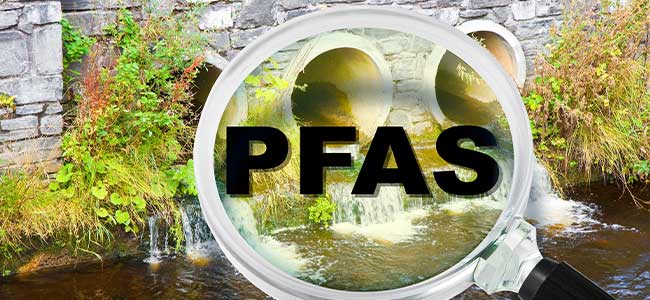
EPA Targets Industrial Wastewater to Curb PFAS Contamination
The EPA is launching studies to evaluate PFAS wastewater discharges in key industries to inform future regulations and protect water quality.
- By Robert Yaniz, Jr.
- Dec 17, 2024
The U.S. Environmental Protection Agency (EPA) is taking new steps to address the discharge of per- and polyfluoroalkyl substances (PFAS) from industrial wastewater into local waterways.
According to a recent release, the agency announced its Preliminary Effluent Guidelines Program Plan 16, outlining studies to assess PFAS pollution and potential treatment solutions across multiple industries. The move is part of the EPA’s broader PFAS Strategic Roadmap, aimed at reducing harmful exposure to these persistent chemicals, often referred to as “forever chemicals” due to their inability to break down in the environment.
The EPA will focus on collecting data from four key industrial categories: battery manufacturing, centralized waste treatment, oil and gas extraction, and facilities processing PFAS into commercial products. These studies will help the agency determine whether new or revised regulations are needed to limit PFAS discharges. Any resulting rulemaking would aim to curb contamination at the source using the most advanced and economically feasible technologies.
“EPA is committed to working with state partners to develop strong national rules to reduce the presence of forever chemicals in our waterways,” EPA Principal Deputy Assistant Administrator for Water Bruno Pigott said in a statement. “That means we must work to develop our collective understanding about PFAS discharges from industry. From there, we can better innovate and implement durable treatment solutions that protect our communities over the long run.”
The studies align with the Biden administration’s Cancer Moonshot initiative, which seeks to reduce exposure to cancer-causing substances. PFAS have been linked to various health issues, including cancer, liver damage, and immune system disruption.
Effluent limitations guidelines (ELGs) are a central component of the EPA’s strategy. These technology-based standards are designed to limit industrial pollutants released into surface waters and treatment facilities under the Clean Water Act. The new plan signals the agency’s intent to expand its understanding of PFAS sources and strengthen protections for public and environmental health.
The public can provide input on the EPA’s plan during a 30-day comment period. Comments can be submitted via the agency’s Preliminary Effluent Guidelines Program Plan webpage.
About the Author
Robert Yaniz, Jr. is the Content Editor for Environmental Protection.